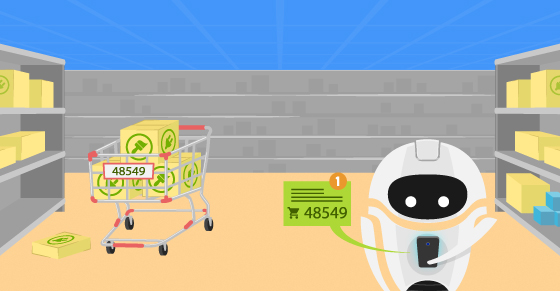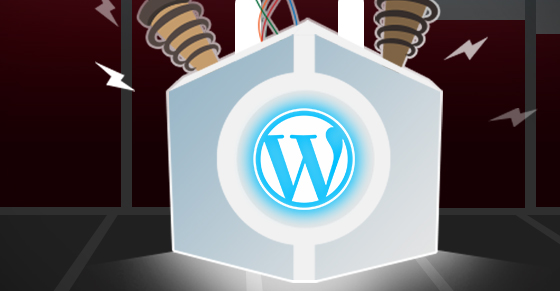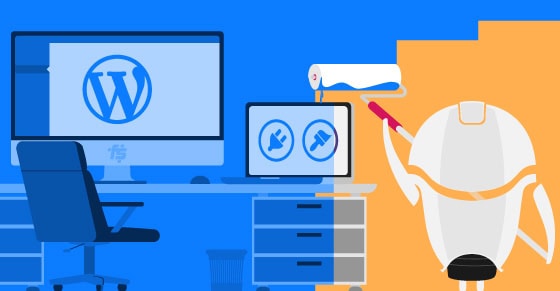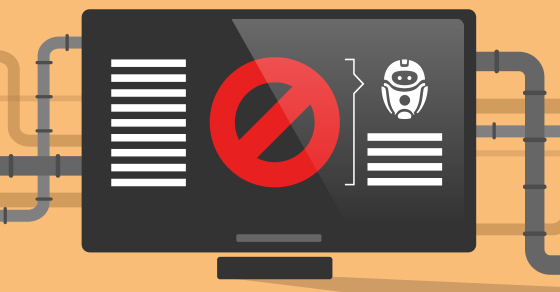|
|
You’ve got your products ready, with a proper checkout in place, and have customers visiting your premium WordPress plugins or themes online shop. They spend time checking out your products, adding some of them to their shopping cart only to abandon it without actually completing the purchase.
Frustrating? Yes.
The end of your relationship? Definitely not!
In this article, I want to discuss the recurring issue of cart abandonment by prospects who might actually need your WordPress solutions but for different reasons do not complete the purchase. I will also show you what ways are available to us, as WordPress product sellers, to automatically recover & win back a significant part of those lost carts, without investing much time or thinking about it too much.
Have I mentioned it’s all automated?
Why Do Users Abandon Your WordPress Plugin / Theme Checkout?
It’s important to first understand what are the possible reasons that might drive your prospects to abandon their loaded carts.
As I’m writing this, I’m remembering the last time I had abandoned a loaded cart:
I was looking to buy a drone and had been doing my reading and online research for a few days. When I felt ready to buy I went to a certain quadcopter company website and added my drone of choice, as well as a few accompanying items to my shopping cart. As I was about to start the checkout I realized I still didn’t have all of the information I needed regarding the warranty and product care service this company provides for the longer term. Accidents happen and drones crash and get damaged, so I wanted to make sure this was covered in my country, too. Unable to find the info I needed, I decided to do some more research on external online forums, and have abandoned my loaded cart.
My reasoning for this specific cart abandonment was related to a lack of some technical information about the product I was looking to buy, but according to a cart abandonment report from 2016, there are different reasons why people abandon carts:

According to this summary of 37 different cart abandonment studies, the average percentage of people who abandon their online carts stands at a whopping 69.23%!
I guess my personal recent cart abandonment falls within the 17% of people who were “Conducting research to buy later”.
After doing my “local warranty” research on an external forum, I had received an automated cart abandonment recovery email from that company and I actually did go back and purchase my drone through their website:

Keep in mind that they could easily have “lost me” to some competing company while I was doing my research if I were to come across a more enticing offer, which is why it is important to try to reduce the chances of customers abandoning their cart after they’ve loaded it with your products:
Combating Cart Abandonment (Without Involving Discounts!)
So what can you do to reduce the number of people that abandon your cart mid-checkout, besides making sure all of the relevant shopper information is where it should be, or offer massive (unnecessary) discounts?
Well, there are several things you could (and should) make sure are working properly on your website and checkout process that are likely to help:
Do Not Force Registration:
Before I even get to why forced registration is annoying and how it is hurting your conversion rate, let me just say that asking customers to create a user account is completely unnecessary, because modern monetization solutions, like Freemius Checkout, incorporate the email address field as part of the checkout form and create the shopper’s account on the fly once the Purchase / Buy Button is clicked, without asking them to choose a password.
Here’s what this checkout looks like:

On the other hand, when you force people to register an account before they can even perform the action they came to perform (buy from you) you are effectively driving away all of the people who have another option. Here’s what I mean: just a few days ago I had read an interview on the Indie Hackers website and wanted to leave a comment congratulating them on a great interview. To my dismay, after writing the comment, I came across this:

Needless to say, I skipped leaving my comment there, because that is not how this works. If you want me to create an account, then this is not the right time to force me to do it.
Studies show that 37.4% of cart abandonment occurs at the checkout login or registration phase. That’s a huge testament to how annoying this is for people. In fact, 25.65% of surveyed consumers attested that “Needing to register before buying” would cause them to abandon their cart:

Registering a new user account (with a username, and email address, and password) just to be able to make a purchase is a big friction generator for shoppers, so please turn the mandatory registration off for your checkout process.
An Optimized One-page Checkout
While we’re staring at this short & sweet checkout form widget by Freemius, let’s not forget that this by itself is a significant advantage that helps eliminate friction during the checkout process. This simple form includes all of the necessary checkout information in one place, so customers can pay instantly, without being redirected away to complete the transaction, which helps achieve a higher conversion rate. Dividing the checkout process into several pages would allow for more opportunities for a shopper to abandon their cart.
This form has also been optimized and stripped of any form fields which aren’t essential to make the sale go through. More fields may lead to more confusion, which in turn, leads to cart abandonment.
Vary The Payment Methods
I would say it is pretty much mandatory for you to let customers pay using various methods, rather than limit them to only one. If you choose to limit payment methods, you’ll be shooting yourself in the foot, because a shopper that does not see their preferred payment method supported will likely abandon the cart. In fact, I would even dare suggest you consider adding an option to pay using Bitcoin (or other cryptocurrency systems).
So now that we’ve gone through the different ways you can optimize your checkout process for maximum conversions and minimum cart abandonments we are in a better spot than we were before. However, as mentioned earlier, it’s unlikely you will be able to avoid all cart abandonments, as many of them just have to do with things that are beyond your control like people who are “window shopping”, comparing prices, saving items for later, exploring gift options, etc.
You can’t avoid all cart abandonments. Many of them have to do with things beyond your control.
Still, there’s a great way to try and win back those abandoned carts. Let’s talk about that:
The Cart Abandonment Recovery Technique
The whole idea with a Cart Abandonment Recovery Mechanism is to win back those abandoned carts by trying to bring potential buyers back in, directly to where they left off so that they can complete their purchase in the smoothest manner possible.
According to a study done in 2015, what ends up happening with the majority of people that abandon a cart on a website is that they simply find another way of obtaining the product they were after, usually through a different, competitor website:

As a WordPress plugins or themes seller, you probably know that finding competitors who sell premium WordPress plugins online is not a very difficult task, and I’m not even going to mention the over-saturated premium themes’ market. In other words, customers looking to purchase WordPress plugins or themes will usually be able to easily find premium alternatives.
The good news though is that cart abandoners are among the most qualified leads you’re going to get, and you get a second chance at nudging them from a mental state of “not sure” into a decisive “yes!”, all through the simple magic of the automated ‘Cart Abandonment Recovery Email’ campaign.
I.e., a personalized email campaign that is automatically triggered in the case of a cart abandonment event.
Why Does The Cart Abandonment Recovery Campaign Work So Well?
Why do many choose to try to recover abandoned carts using automated emails?
Well, according to studies on this topic there are some very good reasons:
- Abandonment emails have a 40.7% open rate (nearly twice that of “regular” marketing emails).
- Abandonment emails have an astounding click-through rate of 26.9%
- Over a quarter (26.7%) of clicks on those abandonment emails result in a conversion (purchase) back on the site.
Cart recovery email campaigns have such high success rates because they are aimed at visitors that have already demonstrated an intent to purchase (your second chance!).
Abandonment emails have a 40.7% open rate (nearly twice that of regular marketing emails).
So with this high percentage of engagement and conversion rate that stems from cart abandonment recovery emails – it’s a no-brainer.
Grab a free copy of our Cheat Sheet for
Selling Plugins and Themes
A growth roadmap with concise, actionable tips for every milestone of WordPress product development.

Included: A Fully-featured Cart Recovery Mechanism
Freemius had recently developed and released a fully-featured Cart Abandonment Recovery mechanism, which is included in the service and works automatically out-of-the-box. This means that, if you monetize with Freemius, your cart abandonments are automatically (re)covered!
How Does It Work?
It should be noted that the Freemius Cart Abandonment Recovery Mechanism comes at NO additional cost to developers who monetize their WordPress products with Freemius.
Technically speaking, once an email address is captured, a 60-minute countdown begins. If the visitor completes their checkout within that time frame, Freemius marks them as a ‘completed checkout’ and takes no further action.
But, if the visitor does not complete their purchase inside the 60-minute mark Freemius triggers an automated email campaign designed to bring them back to your site (or their WP Admin) to complete the purchase.
Pulling Abandoned Cart Details
Freemius went with a proactive approach that captures the details the shopper enters as they are typed, allowing for maximum personalization of the Abandoned Cart Recovery email: an email is obviously sent to the address the shopper had entered, and their full name is used for extra personalization. Why? Because personalization works.
Recovery Email Content Is Synced with Your Product Plans
The email Freemius sends out to cart abandoning shoppers contains relevant data that is grabbed from the product’s plans, trial options, and the refund policy you have configured. Those are incorporated into the emails, making it easy for the shopper by including all of the relevant data and driving them directly back to their cart, with all of the ingredients loaded, ready to close the sale:

Timing Is Everything
The ‘Abandoned Cart Recovery’ email campaign is comprised of up to 3 conversion-optimized emails, and Freemius optimizes the timing in which it sends out the recovery emails on your behalf:
- 1st Recovery Email – Sent 60 minutes after the last checkout visit. Will include the actual cart content, as well as your Refund Policy, if you have set one.
- 2nd Recovery Email – Sent 24 hours after the checkout was initiated. Will include the cart content, your Refund Policy, as well as an alternative option to start a Trial, if you offer one (proven to increase conversion rate).
- 3rd Recovery Email – Sent three days after the 2nd recovery email. Will include the cart content, your Refund Policy, a discount code, and an alternative option to start a Trial.
It’s easy to see that the Freemius recovery email campaign has been optimized for a high conversion rate, attempting to bring the shopper back in and complete their purchase, each time introducing another element that may aid our persuasion efforts.
Cart Tracking
Finally, as a developer who sells with Freemius, you can track every single session that occurs on your checkout page, providing you with a new level of insight into your conversion and cart abandonment:

You can easily track how each visitor interacts with your checkout process, as well as their engagement with the automated cart recovery email campaign.
If you monetize with Freemius your cart abandonments are automatically (re)covered!
Conclusion for Online Sellers
Taking the necessary detailed steps to optimize your checkout process for maximum conversions will help you experience fewer cart abandonments by your shoppers. However, as mentioned earlier, it’s unlikely you will be able to avoid ALL cart abandonments, as many of them are related to factors for which you cannot optimize. For that, online sellers of WordPress plugins and themes depend, just like everyone else, on an efficient (and automated) cart abandonment recovery mechanism to bring those customers right back to where they left off, and help them complete their purchase.
There’s no doubt that this method works; it’s just a matter of incorporating it into your sales funnel, and when you monetize your WordPress products (plugins or themes) using modern solutions, such as Freemius – the cart abandonment recovery mechanism comes built-in.








Hey Kobe,
Quite an insightful post on cart abandonment. I learned a lot, plus Freemius looks like a solid solution. Thanks!
Best regards,
Freddy Muriuki